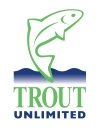States
West VirginiaThis project will remove seven culvert barriers throughout the Upper Greenbrier Watershed in West Virginia. The improvements will open habitat in the tributaries as well as provide connectivity along the main river, and they will improve climate resiliency by providing a network of high elevation, cold-water habitats. Species benefited from this project include brook trout, green floater, eastern hellbender and federally endangered candy darter. This project is part of a larger ten-year effort to remove all barriers into the West Fork and East Fork Greenbrier to create a network of 105 miles of connected cold-water habitat. The surrounding area has a high risk of severe flooding and undersized culverts pose a significant hazard to those who rely on these roads. Some of these sites are within the Monongahela National Forest, a tourism destination that boasts 3 million visitors annually. Replacing the road stream crossings with fish friendly structures that can withstand higher flow events will provide both public safety and recreational benefits.
Project Quick Facts:
| Project Status | In Development |
| Location | WV, Pocahontas County |
| NFPP Project Funding | $939,500 |
| Restoration Techniques | Culvert Replacement |
| Accomplishments | 25 Stream Miles Reopened |
| Partner Project Lead | Trout Unlimited |
The National Fish Passage Program combines technical expertise with a track record of success.
Implemented primarily through the Service's Fish and Wildlife Conservation Offices, the National Fish Passage Program provides financial and technical assistance to partners across the country. Since 1999, the program has worked with over 2,000 local communities, Tribes, and private landowners to remove or bypass over 3,400 barriers to fish passage fish passage
Fish passage is the ability of fish or other aquatic species to move freely throughout their life to find food, reproduce, and complete their natural migration cycles. Millions of barriers to fish passage across the country are fragmenting habitat and leading to species declines. The U.S. Fish and Wildlife Service's National Fish Passage Program is working to reconnect watersheds to benefit both wildlife and people.
Learn more about fish passage and reopen access to over 61,000 miles of upstream habitat for fish and other animals. Staff have expertise in fish migration and biology as well as financial, engineering, and planning assistance to communities, Tribes, and landowners to help them remove barriers and restore rivers for the benefit both fish and people.
Fish passage project proposals can be initiated by any individual, organization, government, or agency. However, proposals must be submitted and completed in cooperation with a Fish and Wildlife Conservation Office. (Please note that fish passage projects being used for federal or state compensatory mitigation or required by existing federal or state regulatory programs are not eligible for funding through the National Fish Passage Program.)
CONTACT A FISH PASSAGE COORDINATOR IN YOUR AREA TO GET STARTED.



